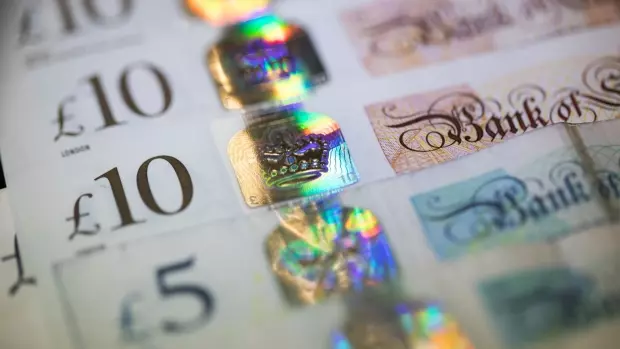London September 23 2022: The pound plunged by the most since March 2020, reaching the lowest in 37 years against the dollar, as the UK’s expensive fiscal stimulus plan fueled concerns about inflation and the nation’s ballooning debt.
Sterling fell by as much as 3.5% to $1.0863 on Friday after the British government outlined new debt borrowing to fund increased spending. That has brought up talks among investors about the pound reaching parity with the euro and the dollar and drew comparisons with emerging markets as the country’s bonds also tumbled.
Confidence in UK market vanished on Friday after Chancellor of the Exchequer Kwasi Kwarteng outlined a plan for expansive tax cuts and spending. Investors questioned how the government would be able to fund the plan and said the moves would fuel even-higher inflation and force the Bank of England into more aggressive tightening. Liz Truss’s government set out the most radical package of tax cuts for the UK since 1972, reducing levies both on worker pay and companies, with a total cost of as much as £161 billion over the next five years.
“It’s hard to imagine a worse setup for the pound,” said James Athey, investment director at abrdn. “As ever in such EM-esque situations the worry is that once this cat is out of the bag even a return to orthodoxy might not quell the investor rush for the exit.”
This means the end for the pound’s rout may not be in sight. Bloomberg’s options pricing model now shows a one-in-four chance the pound can reach parity with the dollar in the next six months, up from 14% Thursday. Risk reversals, a barometer of market positioning and sentiment, show that traders see the greatest downside risks for the sterling over the medium term in two years.
UK bond yields surged on Friday, with the 10-year gilt yields seeing their biggest one-day surge on record in Bloomberg data through 1989, closing 33 basis points higher on the day at 3.83%.
Bluebay Asset Management LLP chief investment officer and senior portfolio manager Mark Dowding said he’s been short on the pound for “awhile now” and only added to that position Friday.
“We think the government plans will challenge finances and that this will continue to weigh on UK gilts and the pound,” he said, adding the pound can reach parity versus the US dollar and the euro.
The UK’s Debt Management Office increased its gilt sales plan for the fiscal year 2022-23 by £62.4 billion ($69.8 billion) to £193.9 billion to fund the spending. That compares to an estimated £60 billion increase expected by eight banks surveyed by Bloomberg.
“I would say the market is very skeptical that sterling is yet in a buy in valuation,” said Steven Englander, global head of G-10 foreign-exchange research at Standard Chartered Plc. “It has to drop far enough for people to say that all this risk is priced in.”
For Citigroup Global Markets, shorting the pound against the US dollar “is the A trade” as the Federal Reserve pushes rates higher, fueling the dollar. Also the UK’s wide current account deficit calls for a weaker currency, according to the bank.
“The UK has jumped further down the fiscal rabbit hole in the same week the BoE announced active gilt sales. This is GBP bearish,” Citi strategists including Jamie Fahy wrote in a note on Friday.
Meanwhile, JP Morgan Chase & Co. currency analysts Meera Chandan and Patrick Locke lowered their cable target to $1.05 from $1.10 and are recommending shorts on the pound against the dollar and the Swiss franc.
“It makes me very sorry to say, but I think the UK is behaving a bit like an emerging market turning itself into a submerging market,” former US Treasury Secretary Lawrence Summers told Bloomberg Television on Friday. “I think Britain will be remembered for having pursuing the worst macroeconomic policies of any major country in a long time.”










